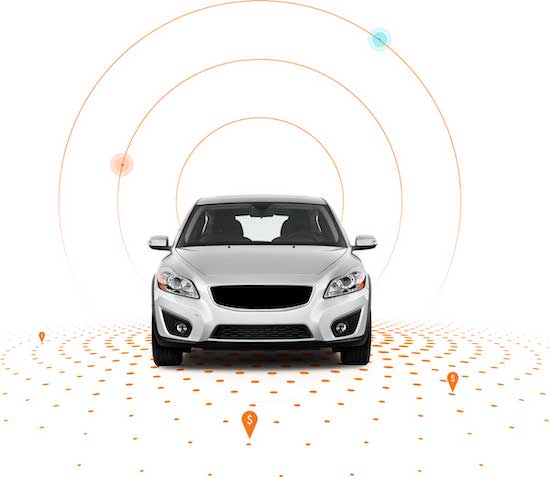Banking Tech Awards 2022 Winner: Car IQ – enabling secure, seamless vehicle payments
FinTech Futures spoke to Arun Yadav, CTO at Car IQ, the winner of the Best Smart Banking Tech Solution – Innovation Award at the Banking Tech Awards 2022. The company’s machine banking payment platform, Car IQ Pay, enables vehicles to transact securely with merchants and service providers.
What is the gap in the market that Car IQ addresses?

Arun Yadav, CTO of Car IQ
At the core, we are a machine banking platform which allows automakers and large fleet companies to build their own vehicle wallet using our patented know-your-machine technology.
Our founder and CEO, Sterling Pratz, recognised the lack of innovation and consistency within the connected car space, specifically around automotive payment solutions. He saw the original equipment manufacturer (OEM) need and fintech opportunities for a secure payment network that connects vehicles to banks and merchants to transact securely. The technology creates a unique identity for each vehicle that is trusted by banks and enables the vehicle to pay for fuel or services without a credit card.
Car IQ is targeting the $650 billion spent annually on vehicle services using credit cards, debit cards, and automated clearing house (ACH), where people must perform and manage the transaction. Existing payment methods can be costly to manage, difficult to reconcile, and prone to fraud.
How do you manage security?
We process millions of data points from vehicle sensors to give vehicles a trusted behavioural identity. It’s no longer a static identity or a static identifier. For example, when a vehicle requests to transact, using these behavioural identities, we answer questions such as is this the right vehicle and does this vehicle need the service? And if yes, to what extent? What is the estimated spend for this service? Is it at the location of service?
And after the payment is made for that service, we go back and re-scan the vehicle to make sure that the service was indeed given to the vehicle that paid for it. This 360-degree insight into the vehicle and vehicle services and its spend is where a new form of transactional security comes from.
Typical payment methods don’t allow you to have that kind of insight because today a driver, be it a consumer or a fleet driver, has a physical card and they choose to use that physical card when they want it, where they want it, for what purpose they want it. Our solution takes all of this away and focuses on enabling these machines to have their own banking capabilities.
How about the implications for a fleet provider that wants to get on board with your technology? How quickly can you get someone up and running?
We have basically an instant issuance of bank accounts for these machines. Whether it is a business or an individual consumer, they just need to go through our application process. Once a decision is made to give the vehicle these banking capabilities, we verify and create the behavioural identity for that vehicle, and as soon as the identity is created and the initial trust is built, a bank account is created for that machine.
We saw the power of this instant issuance when one of our customers was piloting our solution, and had a problem one weekend with their physical cards. They were not usable and their drivers were unable to pay. We were able to add hundreds of their vehicles to our platform right away, with instant bank account issuance and funding.
You mentioned individual consumers. Is that where you are targeting as well as the fleet business?
Absolutely. They are two verticals to our business. We started with large fleet companies and that’s still one of the main focuses. But then where we truly see this solution shine at scale is the consumer market.
The idea is not to go to individual consumers and activate the banking capabilities for their vehicles, but rather work with our partners, such as automakers, to power their solution by leveraging our machine banking platform and interoperable access to all merchants in vehicle spend categories.
Do you have any of those partnerships yet?
Yes, we are already working with a few automakers. I am not at liberty to share the names because of the early work but watch this space.
The vehicle wallet has been a hot topic of late. What are the pros and cons of each approach?
When I was at Verifone, the mobile wallet was the talk of the town. Back then, along with your usual suspects like Apple Pay, Google Pay, Samsung Pay, Alipay, I was working with some of the major banks that were building their own mobile wallets. And so for me, in some ways it is a feeling of deja vu. One key learning from that experience was that the consumer isn’t looking for ten different solutions. They just want a simplified experience and consistent acceptance, something that could make their life easier.
The bar for automakers looking to build their own vehicle wallet is quite high because not only does it need to be better than physical cards, it needs to be better than some of these existing digital wallets or mobile wallets. In my opinion, automakers want to focus on building the right experience without worrying about tackling the complexity of building a secure payment platform that can support all of their use cases.
Our solution allows automakers to do that. So, in many ways, we are happy that the industry is talking about vehicle wallets and we are looking forward to working with our existing and future automaker partners to use our platform to help them build the right user experiences for their vehicle wallet.
How about on the other side of the equation? You have partnerships with Shell and other fuel and convenience operators and look to be diversifying, through tie-ups with the likes of car wash membership platforms and electric vehicle charging companies.

Car IQ is targeting the $650 billion spent annually on vehicle services
Our CEO likes to say that vehicles are driving around looking to pay for things and services. In many ways, if you think about it, your vehicle does have a constant need for services that need to be paid for, be it charging, fuelling, tolling, parking, insurance, financing, repairs, maintenance and many more. Today, paying for all of these services is a broken experience with many friction points.
Partnering with all these merchants across different categories means that our vehicles, using the banking capabilities, can communicate to them directly without requiring drivers to activate and pay for those services. Consumers simply want to have their vehicle serviced and pay for it without having to worry about, do I have the app, do I have the account, is my payment method accepted?
I guess there’s an element of building up critical mass?
Exactly. We want to add as much coverage as we can for our vehicles to be able to use services across different services and mass locations. And so far, we’ve done a great job at adding this coverage. If you look at our recent partnerships, you’ll see that within fuelling we have significantly improved our coverage. We are launching tolling, we are working on parking, and we have a lot of attention on electrical vehicle (EV) charging and many other categories.
From the fleet manager point of view, as well as reducing fraud, it sounds as though you are bringing additional control and additional transparency, with much more immediate information.
Absolutely. There are two key benefits. One is from an operational perspective. There is no need to circulate physical cards. Cards get lost and stolen, they are expensive to manage, they need to be recycled. From an operational point of view, we make these companies’ job a lot easier and a lot more cost-effective by offering digital instant issuance.
On the fraud side, the access to the data and our identity features mean we are able to prevent the majority of fraud. The platform gives them insights that they did not have before. They had to do a lot of manual investigation to figure out if there was fraud and it was error-prone. It was pretty much impossible to detect with confidence if fraud was taking place. We have automated this for them and not only show them where fraud was prevented but also proactively expose if there has been any friendly fraud taking place.
And that data has other uses?
There are multiple models. Our merchants can use the data to incentivise drivers. For instance, a fuel company could run a programme that says, “Hey, push out a ten cent gallon discount offer to all vehicles that are in ten mile proximity of a fuel stop and have vehicle capacity of less than 10%”. We are just scratching the surface here in terms of new experiences and programmes that could be built using this data and can benefit both our customers and merchants.
What about privacy?
When we were designing our solution, there were two key requirements: consumer privacy and transactional security that drove every aspect of our solution design and its implementation. We don’t push any raw data to our cloud from the vehicle. We take the vehicle sensor data and process this within the vehicle. By processing these data points inside the vehicle and sending only anonymised data to the cloud we are able to bring new features without compromising consumers’ privacy and, at the same time, strengthen the transactional security for our platform.
We’ve covered a lot of ground. My final question is, beyond the US, what are your ambitions?
We are already looking at a handful of other markets. Canada is just on the horizon. We are also looking at some European countries because of our partnerships and our portfolio of investors. Some of our investors have a heavy presence in Europe and they feel that Car IQ would be a perfect fit for those markets. And so the US is just a start.
Sponsored by Car IQ












































